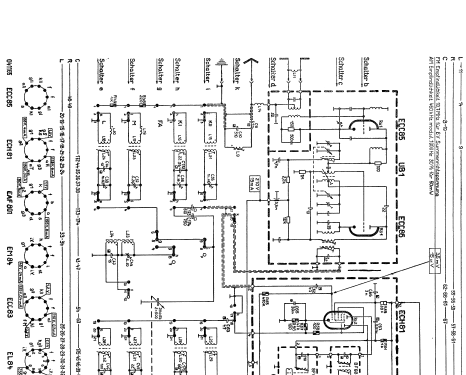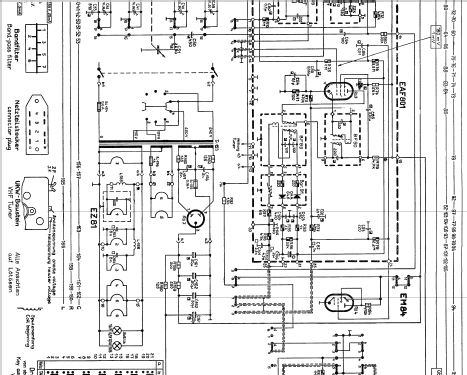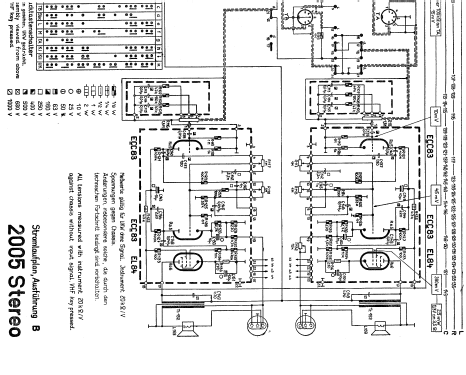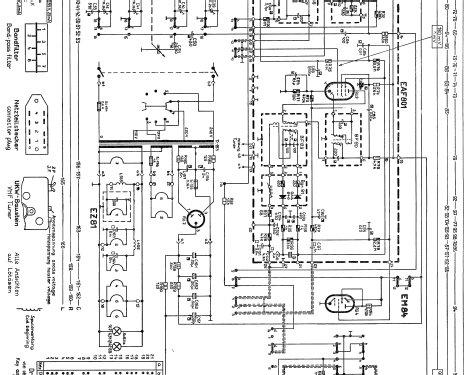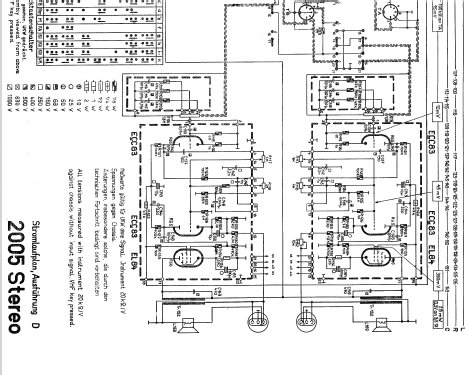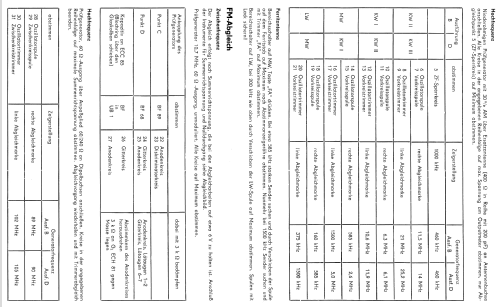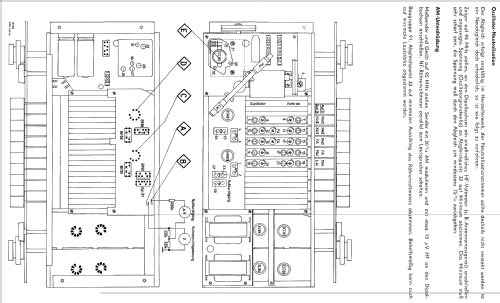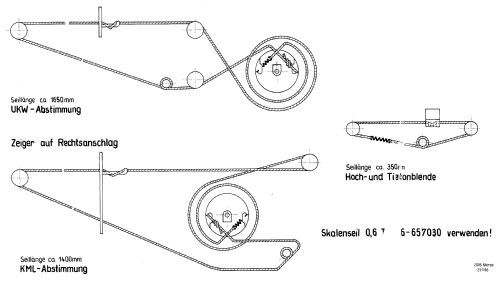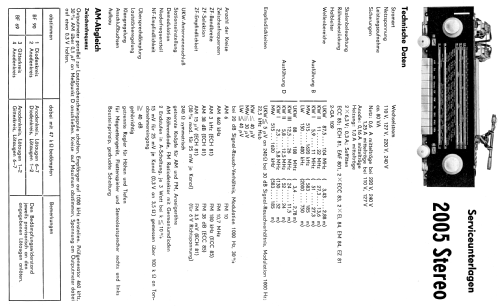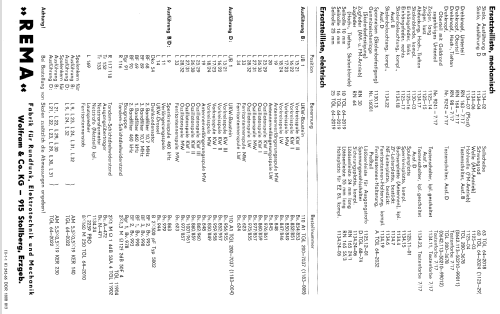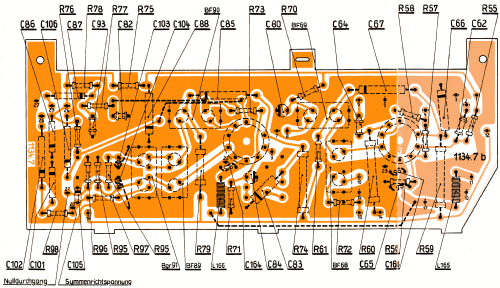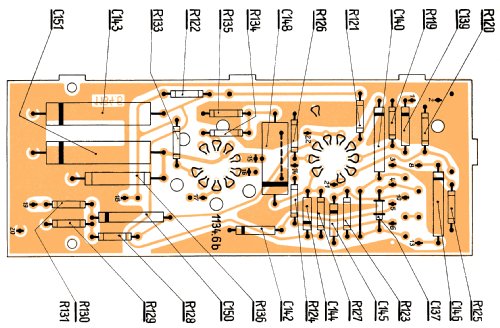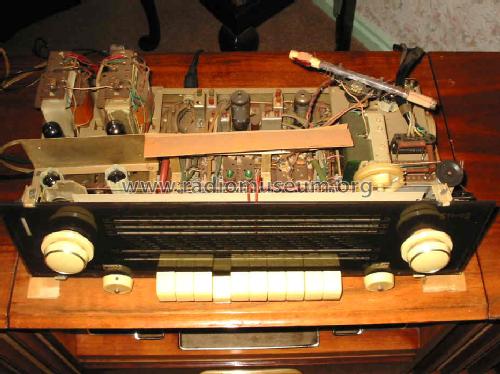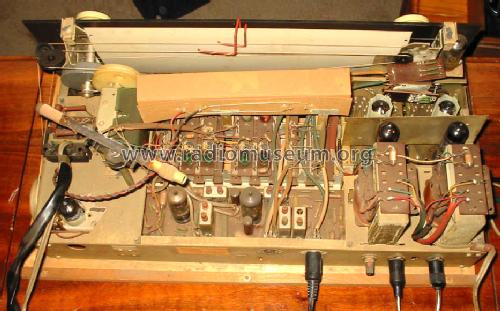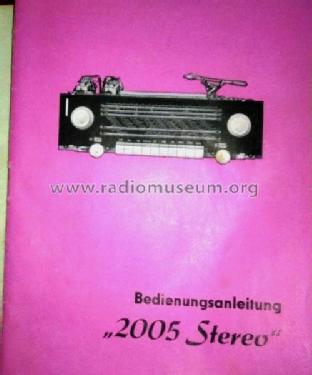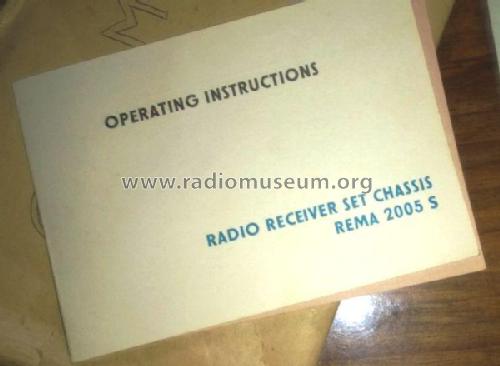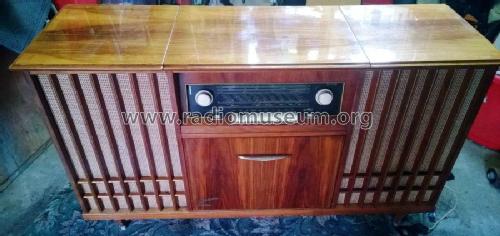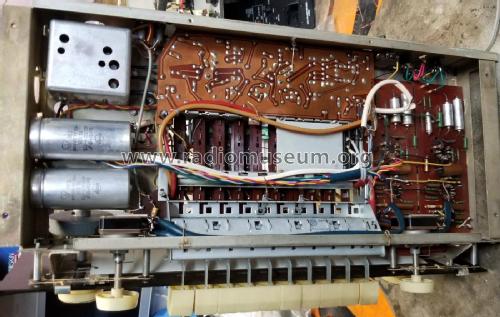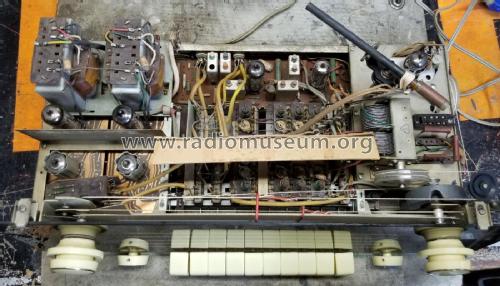Radiochassis 2005 Stereo B and D
REMA, Fabrik für Rundfunk, Elektrotechnik und Mechanik, Stollberg (Ostd.)
- Hersteller / Marke
- REMA, Fabrik für Rundfunk, Elektrotechnik und Mechanik, Stollberg (Ostd.)
- Jahr
- 1965–1968
- Kategorie
- Rundfunkempfänger (Radio - oder Tuner nach WW2)
- Radiomuseum.org ID
- 148481
Klicken Sie auf den Schaltplanausschnitt, um diesen kostenlos als Dokument anzufordern.
- Anzahl Röhren
- 9
- Hauptprinzip
- Superhet allgemein; ZF/IF 460/10700 kHz
- Anzahl Kreise
- 6 Kreis(e) AM 10 Kreis(e) FM
- Wellenbereiche
- Langwelle, Mittelwelle, mehrere Kurzwellenbänder plus UKW (FM).
- Betriebsart / Volt
- Wechselstromspeisung / 110; 127; 220; 240 Volt
- Lautsprecher
- - Dieses Modell benötigt externe(n) Lautsprecher.
- Belastbarkeit / Leistung
- 7 W (Qualität unbekannt)
- Material
- Metallausführung
- von Radiomuseum.org
- Modell: Radiochassis 2005 Stereo B and D - REMA, Fabrik für Rundfunk,
- Form
- Chassis - Einbaugerät
- Abmessungen (BHT)
- 500 x 190 x 280 mm / 19.7 x 7.5 x 11 inch
- Bemerkung
-
Einbauchassis für den Export zum Einbau in Musikmöbel verschiedener Hersteller.
Anschlussbuchsen für TA, TB, Lautsprecher links und rechts, getrennte Einstellung für AM/FM und Höhen/Tiefen.
Ausführung B: 2x KW, MW, LW, UKW bis 104 MHz, Ferritantenne;
Ausführung D: 3x KW, MW, UKW bis 108 MHz, Ferritantenne.
- Literaturnachweis
- Service-DVD Funkverlag B. Hein
- Literatur/Schema (1)
- -- Original-techn. papers. (Serviceunterlagen)
- Autor
- Modellseite von Keith Dobson angelegt. Siehe bei "Änderungsvorschlag" für weitere Mitarbeit.
- Weitere Modelle
-
Hier finden Sie 163 Modelle, davon 137 mit Bildern und 121 mit Schaltbildern.
Alle gelisteten Radios usw. von REMA, Fabrik für Rundfunk, Elektrotechnik und Mechanik, Stollberg (Ostd.)
Sammlungen
Das Modell Radiochassis befindet sich in den Sammlungen folgender Mitglieder.
Forumsbeiträge zum Modell: REMA, Fabrik für: Radiochassis 2005 Stereo B and D
Threads: 1 | Posts: 12
I am replacing the mains power cable on this set. As is normal, the original cable does not include a ground/earth wire. I would like to connect the ground/earth wire that is in the replacement cable, to the set. This is mainly for audio reasons, and also safety reasons. I am in the UK where earth is standard on mains power sockets.
I have some years experience with audio and electrical wiring, but am not familiar with vintage equipment from the DDR, and thought this may be a good thing to check with the wise folks of the RadioMuseum.
My questions are:
1 Is this likely to be a good/safe idea?
2 If so, What is the best place to connect it to? Do I simply make a really strong connection to a solid part of the radio's metal chassis?
3 I would also like to do the common hi-fi practise of connecting the earthing cable (NOT the audio cable screen) from another peice of audio, a turntable, to the same connection point on the radio. Is this likely to be a good/safe idea?
4 Are there any capacitors, or anything else, that should be discharged, or otherwise made safe, before handling/soldering the power connections?
5 Is it best to wait some time after disconnecting the power plug, before working on it?
It's great to make my first post on RadioMuseum - I'm very glad to see there's no such thing as a stupid question!
Keith Dobson, 24.Feb.09
